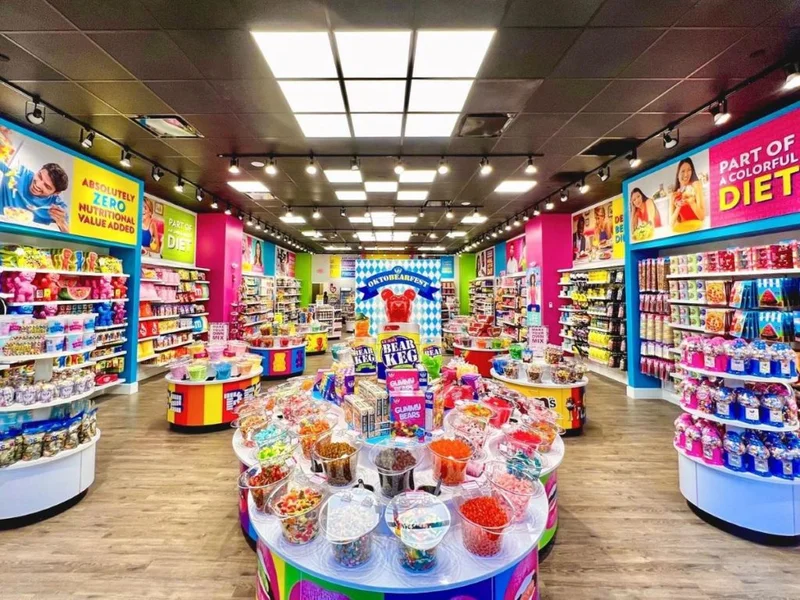Article Directory
The Unraveling of a Sugar Empire
The timing is almost poetic in its cruelty. One week before Halloween, the high holiday of the American sugar industry, Candy Warehouse filed for Chapter 11 bankruptcy. For a family-owned business that has been slinging sweets since 1998, this is more than just a financial restructuring; it’s a distress signal from the heart of an industry caught in a perfect storm.
The filing on October 24 wasn't a surprise to anyone watching the numbers. It was the logical, if painful, endpoint of two powerful and opposing forces colliding. On one side, you have a seismic shift in consumer behavior. On the other, a supply-chain catastrophe of historic proportions. Candy Warehouse wasn't just a victim of one or the other. It was crushed in the middle.
Let’s be clear: Chapter 11 is not a death sentence. It’s a bid to reorganize, to keep the lights on while negotiating with creditors. But it is an admission of insolvency—the cold, hard reality that liabilities have eclipsed assets. How did a company built on a seemingly unshakable foundation of American sugar consumption find itself here? The answer isn't in their business plan; it's in the data that surrounds them.
The Demand-Side Squeeze
The modern consumer is a fickle and contradictory creature, and nowhere is this more apparent than in the candy aisle. For years, the narrative has been a simple one: people like candy. But the data now shows a deep fracture in that consensus.
First, there's the health-conscious wave. A 2023 study found that 47% of consumers are now actively seeking "healthy" candy options to cut down on sugar. This isn’t just a niche market of bio-hackers in Silicon Valley; it’s nearly half the addressable market. The CEO of Zolli Candy, Alina Morse, notes that adults are specifically looking for functional, zero-sugar hard candies. This represents a fundamental rewiring of consumer desire. People don't just want a treat; they want a treat that does something for them, or at least does less harm. I've looked at hundreds of these consumer trend reports, and this particular shift away from "empty calories" towards "functional indulgence" is one of the most consistent and aggressive I've seen in the last decade.
But what about the other 53%? They’re getting squeezed by something far more primal: price. As inflation bites, consumers are becoming intensely sensitive to cost. Chris Borges, a director at candy giant Perfetti Van Melle, stated it plainly: "Consumers have taken a step back." They are balking at price hikes and the insidious practice of "shrinkflation," where the package stays the same size but the contents get smaller. The anecdotal data from online forums and social media confirms this; it’s a constant grumble of resentment.
So you have two diverging paths. One group is abandoning traditional candy for healthier alternatives, and the other group is simply refusing to pay the rising price for the classic stuff. For a bulk distributor like Candy Warehouse, whose entire model is predicated on moving massive volumes of traditional confections, which of these two trends is more dangerous? Does it even matter when both are hitting you at the same time?

The Cocoa Catastrophe
If the demand side was a slow-moving glacier, the supply side was a volcanic eruption. The core problem can be distilled to a single commodity: cocoa. Poor harvests in Ghana and the Ivory Coast, which together account for 60% of global production, sent prices into the stratosphere. In 2024, worldwide cocoa prices surged by a staggering 178%.
Let’s put that number in perspective. A 178% increase in a primary input isn't an inconvenience you absorb by trimming marketing budgets. It’s an existential threat. It's like the price of steel tripling for an automaker overnight. The entire financial model of your product becomes untenable.
The industry leaders, the ones with the pricing power, responded as you’d expect. Hershey’s variety packs shot up 22%. A bag of Reese’s Peanut Butter Cups went up 8%. Sour Patch Kids saw an increase of about 9%—or 9.4%, to be more exact. The response was a desperate attempt to pass the cost along, with Hershey even announcing it would hike prices on key products like Kit Kat and Reese's by another 26% to reflect the "unprecedented cost of cocoa."
This is the catastrophic pincer movement that trapped Candy Warehouse. Their customers were already screaming about price increases of 8-10%. How could a distributor possibly survive in a market where its own costs were skyrocketing and its end-users were already at their breaking point? I can almost picture the silent, fluorescent-lit aisles of their warehouse, stacked high with brightly colored bags of candy corn and chocolate bars, a monument to a consumer appetite that is rapidly changing and a cost structure that has become utterly detached from reality.
They were stuck. They couldn't absorb the 178% cost increase, and they couldn't fully pass it on to a consumer base that was already in revolt. What other outcome was possible?
An Equation With No Solution
Let's dispense with any notion that this was a simple case of a legacy business failing to adapt. Candy Warehouse wasn't just outmaneuvered; it was caught in an economic equation that had no positive solution.
The demand curve for their core product was shifting left, driven by health trends and price fatigue. Simultaneously, the supply cost curve shifted vertically into the stratosphere due to a once-in-a-generation commodity shock. For a middleman—a distributor whose entire existence depends on the margin between wholesale cost and retail price—that space simply evaporated.
This bankruptcy isn't a story about one company. It's a case study in what happens when long-term consumer evolution meets a short-term systemic shock. Candy Warehouse is just one of the first, and most visible, casualties of the new math of the confectionery world. The real question is, who's next?
